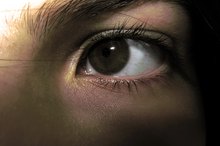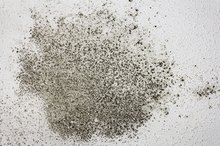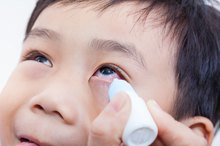Black Mold & Eye Problems
Mold is a form of fungus that is found everywhere in our world. Both indoor and outdoor locations of high humidity are susceptible to mold. While common mold can be a cause of serious health problems, the more rare black mold is toxic and significantly more dangerous. Black mold can increase allergy symptoms, including problems for the eyes.
Common and Toxic Black Mold Differences
The most apparent difference between toxic black mold and more common mold is color. Toxic black mold gets its name from the greenish-black color of the substance, while more common mold such as mildew can have of a bluish-gray hue.
Mycotoxins
Black Mold & Eye Problems
Learn More
The spores from toxic black mold enter our bodies through the respiratory system. We breathe in dangerous fungus and mycotoxins produced by black mold that increase our susceptibility to infection. Mycotoxins are extremely toxic to human beings and severely affect our health.
Fusarium
Fusarium is one type of toxic mold that is harmful to the eyes. According to The Toxic Mold Advisor website, "Fusarium can infect the eye, skin, and nails. It also can cause diarrhea, nausea, vomiting, and excessive internal hemorrhaging. It mimics estrogen in the human body and can attack the reproductive organs."
Mold Allergies
Diseases Linked to Black Mold
Learn More
People with allergies to common mold also are affected by the presence of toxic black mold. According to the Centers for Disease Control and Prevention, people with mold allergies may experience “symptoms such as nasal stuffiness, eye irritation, wheezing, or skin irritation.” These symptoms can vary in severity by the type of mold.
Eye Problems
Eye problems that are typical with any allergic reaction can be expected from contact with toxic black mold. Itchiness, redness, irritation and swelling are all common signs of an allergic reaction to mold. Antihistamines, cold compresses and eye drops may help to alleviate uncomfortable symptoms.
Related Articles
References
Writer Bio
Lucinda Harper has traveled far and wide, writing about her professional work experiences in education, politics and the beauty industry since 2004. She graduated from the University of California Irvine with a Bachelor of Arts in Political Science.









